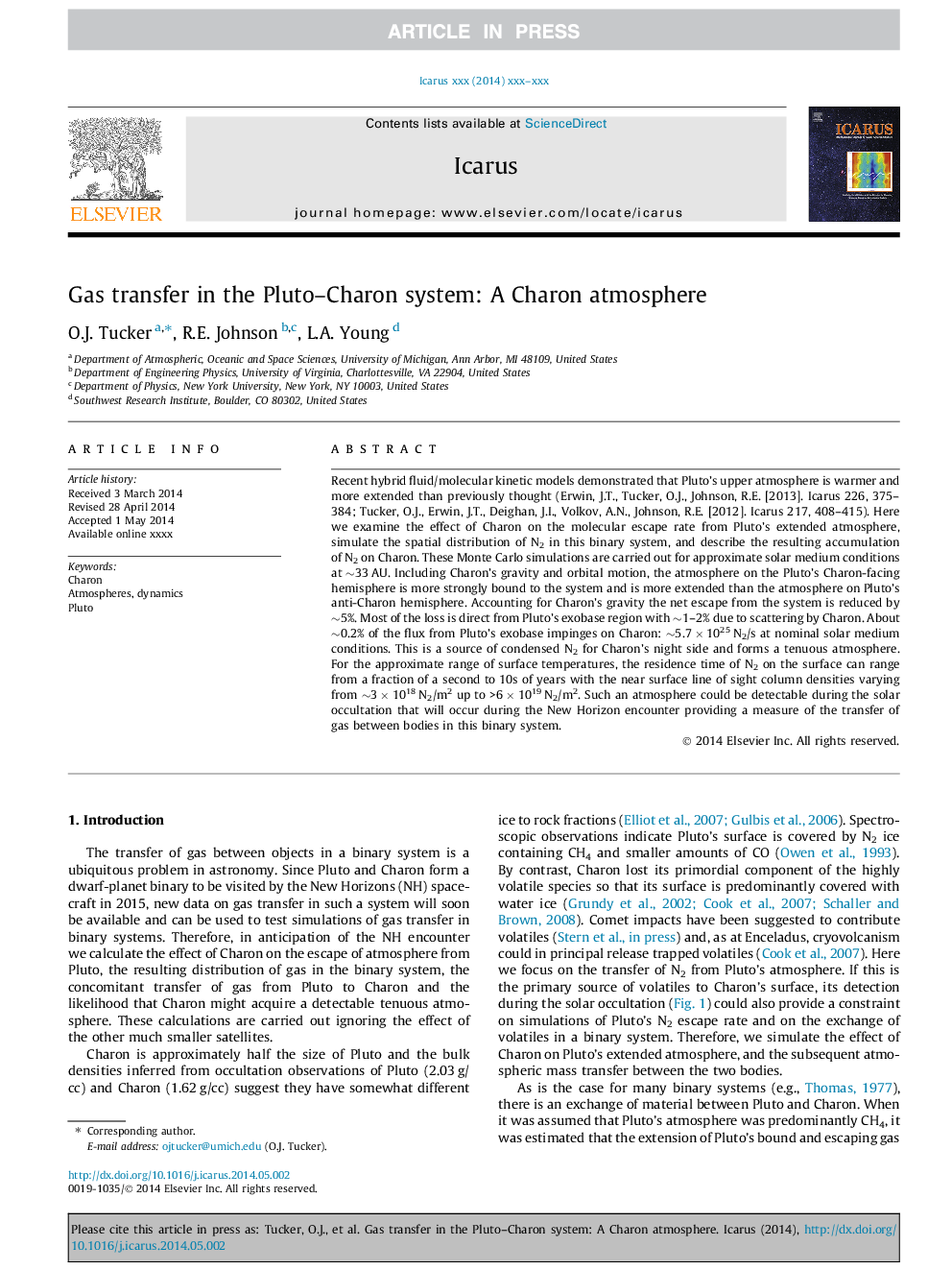| کد مقاله | کد نشریه | سال انتشار | مقاله انگلیسی | نسخه تمام متن |
|---|---|---|---|---|
| 8137267 | 1523544 | 2015 | 7 صفحه PDF | دانلود رایگان |
عنوان انگلیسی مقاله ISI
Gas transfer in the Pluto-Charon system: A Charon atmosphere
ترجمه فارسی عنوان
انتقال گاز در سیستم پلوتو چارون: فضای چارون
دانلود مقاله + سفارش ترجمه
دانلود مقاله ISI انگلیسی
رایگان برای ایرانیان
کلمات کلیدی
چارون، محدوده، دینامیک، پلوتون،
موضوعات مرتبط
مهندسی و علوم پایه
علوم زمین و سیارات
علوم فضا و نجوم
چکیده انگلیسی
Recent hybrid fluid/molecular kinetic models demonstrated that Pluto's upper atmosphere is warmer and more extended than previously thought (Erwin, J.T., Tucker, O.J., Johnson, R.E. [2013]. Icarus 226, 375-384; Tucker, O.J., Erwin, J.T., Deighan, J.I., Volkov, A.N., Johnson, R.E. [2012]. Icarus 217, 408-415). Here we examine the effect of Charon on the molecular escape rate from Pluto's extended atmosphere, simulate the spatial distribution of N2 in this binary system, and describe the resulting accumulation of N2 on Charon. These Monte Carlo simulations are carried out for approximate solar medium conditions at â¼33Â AU. Including Charon's gravity and orbital motion, the atmosphere on the Pluto's Charon-facing hemisphere is more strongly bound to the system and is more extended than the atmosphere on Pluto's anti-Charon hemisphere. Accounting for Charon's gravity the net escape from the system is reduced by â¼5%. Most of the loss is direct from Pluto's exobase region with â¼1-2% due to scattering by Charon. About â¼0.2% of the flux from Pluto's exobase impinges on Charon: â¼5.7Â ÃÂ 1025Â N2/s at nominal solar medium conditions. This is a source of condensed N2 for Charon's night side and forms a tenuous atmosphere. For the approximate range of surface temperatures, the residence time of N2 on the surface can range from a fraction of a second to 10s of years with the near surface line of sight column densities varying from â¼3Â ÃÂ 1018Â N2/m2 up to >6Â ÃÂ 1019Â N2/m2. Such an atmosphere could be detectable during the solar occultation that will occur during the New Horizon encounter providing a measure of the transfer of gas between bodies in this binary system.
ناشر
Database: Elsevier - ScienceDirect (ساینس دایرکت)
Journal: Icarus - Volume 246, 15 January 2015, Pages 291-297
Journal: Icarus - Volume 246, 15 January 2015, Pages 291-297
نویسندگان
O.J. Tucker, R.E. Johnson, L.A. Young,
